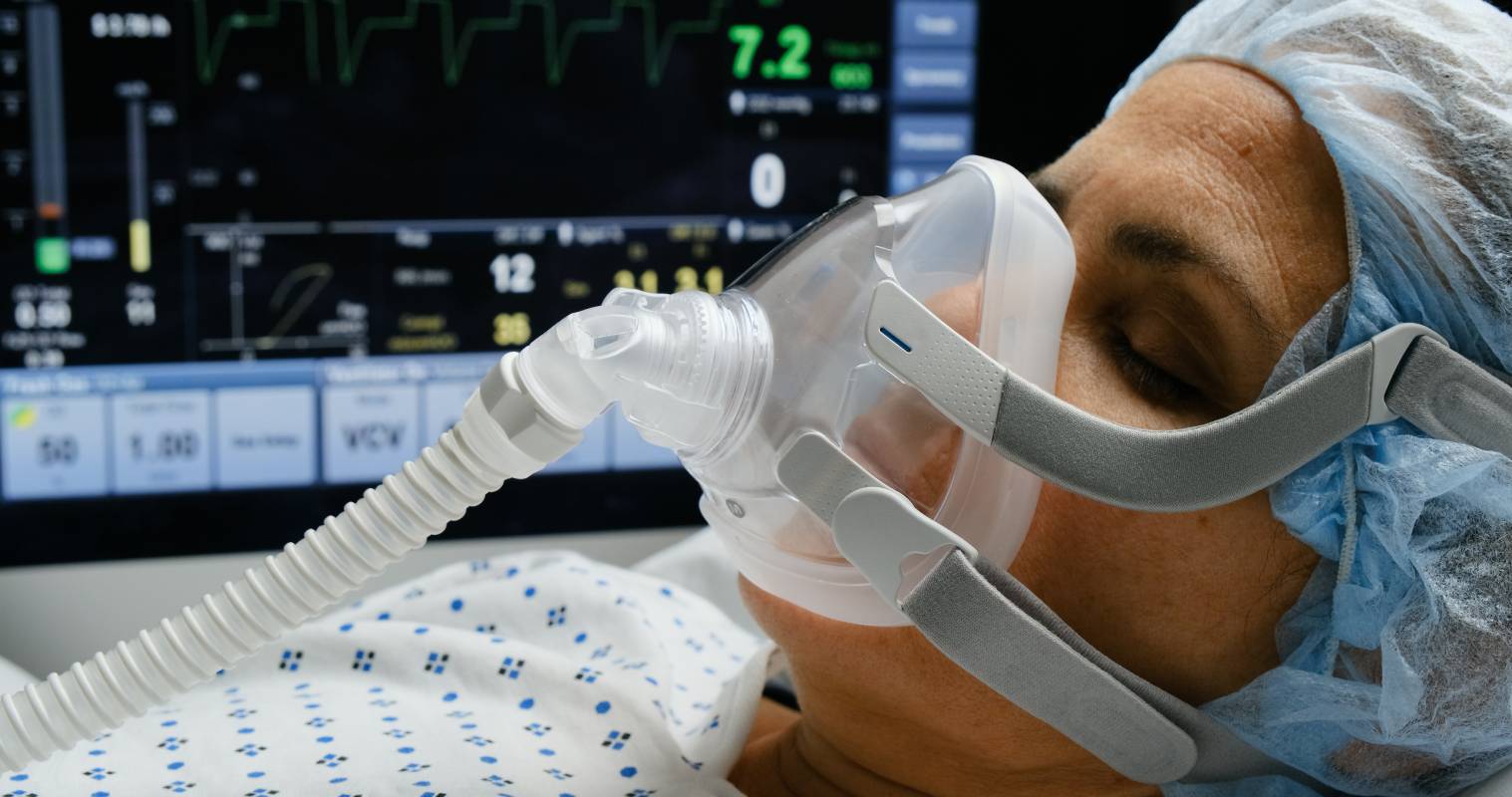Pressure support ventilation (PSV) is a type of ventilation support where there is a fixed pressure setting that assists each breath a patient takes. Rather than a traditional ventilator setting that forces a breath at a specific volume, pressure support augments the patient’s own respiratory effort at a constant level. Thus, this ventilation setting is often used for weaning patients off ventilators and is typically used in units like the ICU or critical care [1]. However, a more recent development is the use of pressure support with ventilators in the operating room while patients undergo general anesthesia. This type of ventilation during anesthesia is advantageous to patients who are critically ill, as they can receive the same ventilation in the OR as they received in the ICU. Thus, there is no interruption in ventilation and oxygenation [2]. The use of pressure support ventilation (PSV) during anesthesia is also being explored in healthy patients undergoing uncomplicated surgeries.
Pressure support ventilation provides several advantages to anesthesia care while in the operating room. With patients who have either a laryngeal mask or endotracheal tube, PSV can increase the volume of oxygen the patient takes in while also minimizing their work of breathing. A comparison study found that between PSV and unassisted ventilation during anesthesia, PSV provides more effective gas exchange and thus better oxygenation by 1.5% [4]. Looking at postoperative outcomes, data has demonstrated that patients who underwent laparoscopic colectomies or prostatectomies and received PSV during emergence from anesthesia had lower rates of postoperative atelectasis or collapse of their lungs [1].
There remain some contraindications and issues to using PSV in an OR setting. Anesthesia for operations requires anesthetic and narcotic drugs that cause respiratory depression, and pressure support may not adequately detect or prevent hypoxia. Further, the use of muscle relaxants makes it difficult to use the PSV mode on ventilators as patients already have a diminished work of breathing [2]. It is unclear if PSV poses any severe safety risk to patients, and more research must be done on possible complications and poor outcomes.
In terms of technological differences and performance between anesthesia ventilators and traditional ICU ventilators, there is variance among study results, which may be attributed to different types of ventilators wacross hospitals and institutions. Jaber et al. tested five anesthesia ventilators and found that only two did not perform as well as the ICU ventilators [3]. A repeated study found that three of five anesthesia ventilators performed as well as the ICU ventilators in terms of pressure support [2]. Overall, advancements in ventilator technology and pressure support ventilation may be important to anesthesiologists when encountering critically ill patients in the OR who may need continuous intensive ventilator support. Further, with the improving technology, PSV usage may continue to expand to healthy patients undergoing surgery. Therefore, it will be important to continue to research and compare the risks and benefits of using PSV with general anesthesia in the OR.
References
- Jeong, Heejoon, et al. “Pressure Support versus Spontaneous Ventilation during Anesthetic Emergence—Effect on Postoperative Atelectasis: A Randomized Controlled Trial.” Anesthesiology, 5 Oct. 2021, 10.1097/aln.0000000000003997.
- Tantawy, Hossam, and Jan Ehrenwerth. “Pressure-Support Ventilation in the Operating Room.” Anesthesiology, vol. 105, no. 5, 1 Nov. 2006, pp. 872–873, 10.1097/00000542-200611000-00004.
- Jaber, Samir, et al. “Performance Characteristics of Five New Anesthesia Ventilators and Four Intensive Care Ventilators in Pressure-Support Mode.” Anesthesiology, vol. 105, no. 5, 1 Nov. 2006, pp. 944–952, 10.1097/00000542-200611000-00015.
- Brimacombe, Joseph, et al. “Pressure Support Ventilation versus Continuous Positive Airway Pressure with the Laryngeal Mask Airway.” Anesthesiology, vol. 92, no. 6, June 2000, pp. 1621–1623, 10.1097/00000542-200006000-00019.
- Bosek, Voytek, et al. “Pressure Support Improves Efficiency of Spontaneous Breathing during Inhalation Anesthesia.” Journal of Clinical Anesthesia, vol. 8, no. 1, Feb. 1996, pp. 9–12, 10.1016/0952-8180(95)00090-9.
